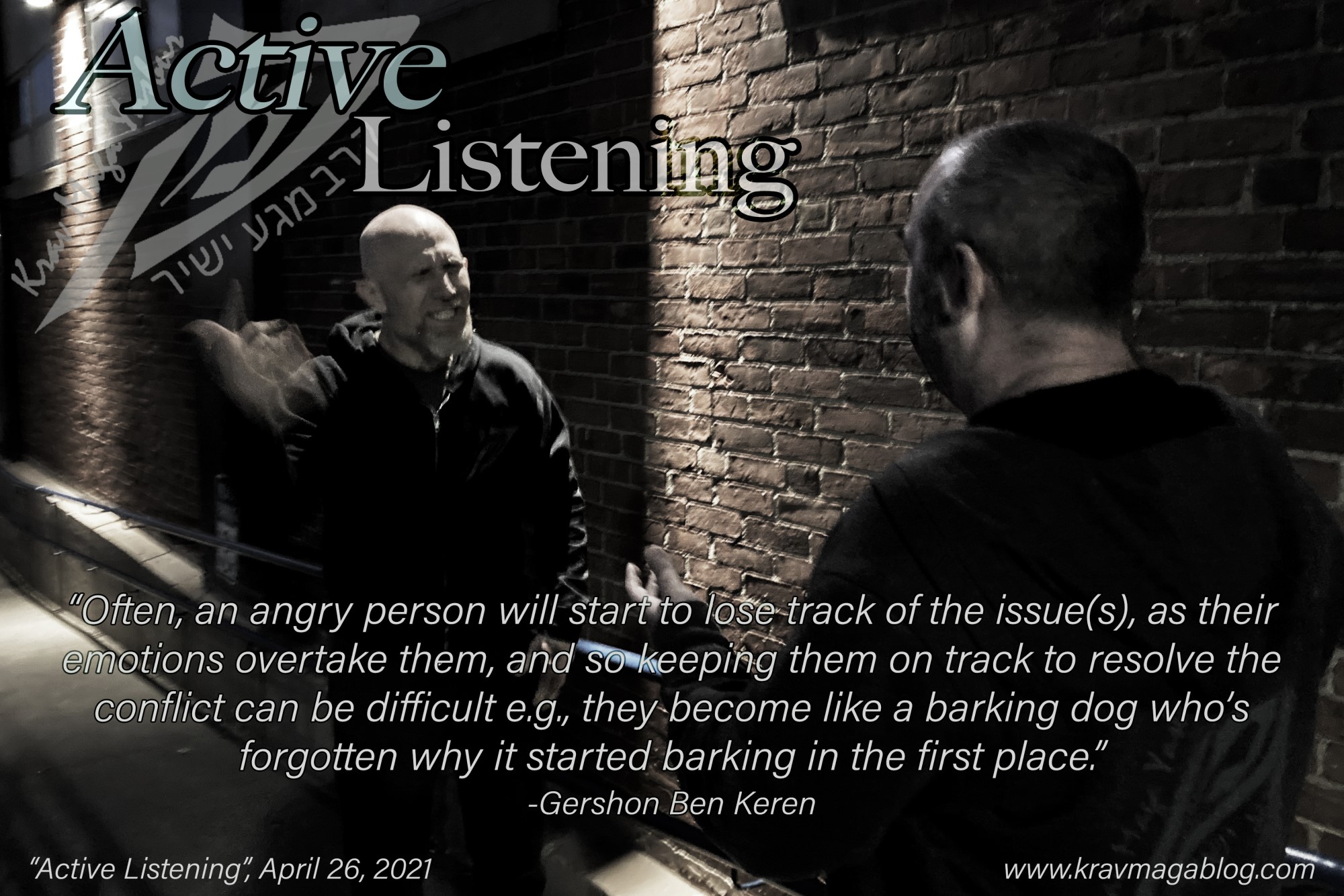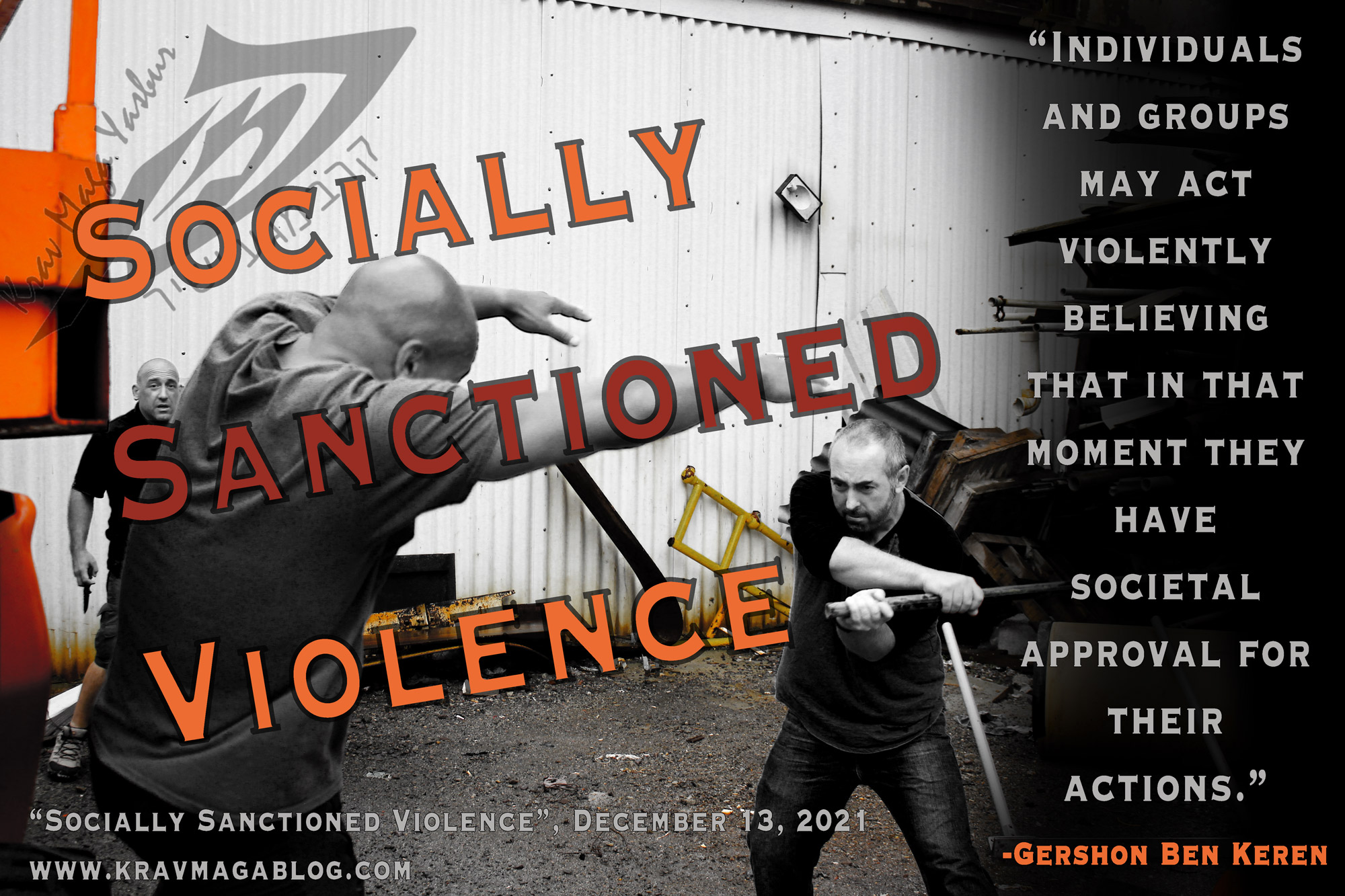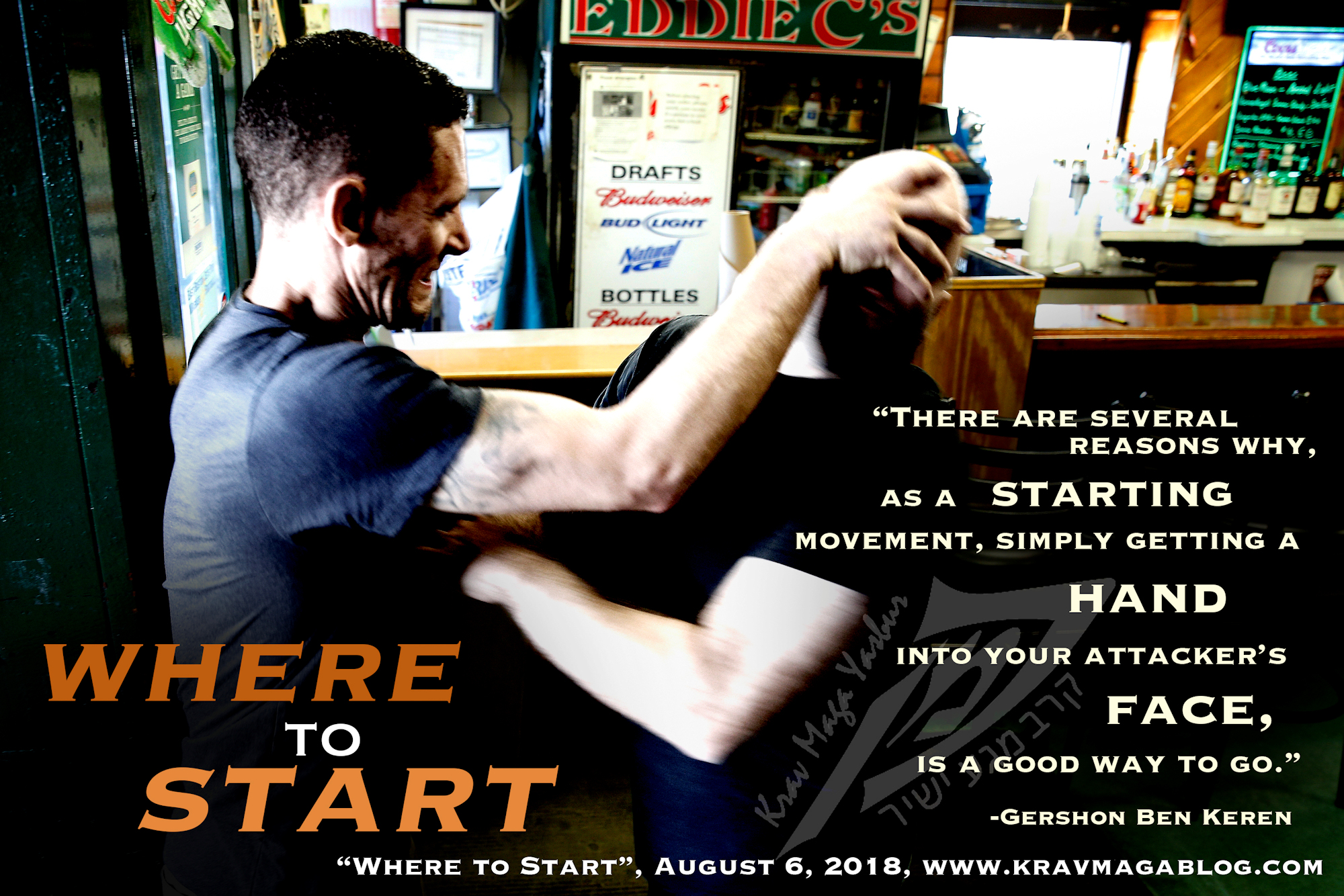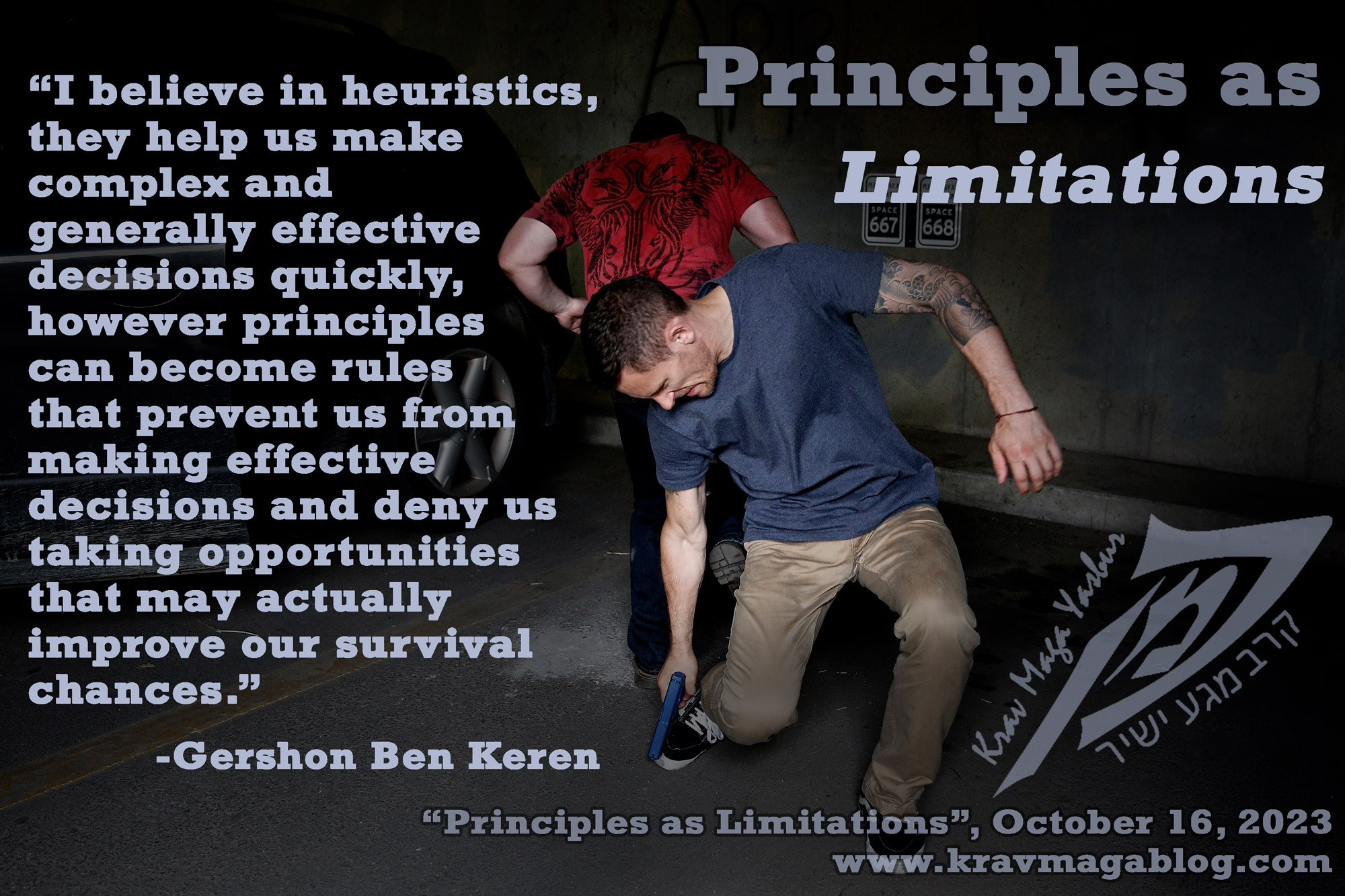Principles As Limitations, is an article written by Gershon Ben Keren, a 5th Degree Black Belt in Krav Maga, who teaches Krav Maga in Boston, MA. He has also authored three Amazon best-Selling Books on Krav Maga.
I’ve never really liked multiple choice tests. I was fine at them for subjects like math and physics where there were “absolute” answers to questions e.g., four plus four always equaled eight etc. However, I have taken professional exams, where an answer might depend on a context, and if a particular context wasn’t given then there might be “alternate” answers to the “correct” one etc. This is one of the reasons it is usually wise to buy the board’s official reference material before taking one of their exams, even if you have a wealth of prior experience, because you will want to understand the context and perspective they are coming from. However, when dealing with real-life violence, the options are rarely “a” or “b”, or even “a”, “b”, “c”, “d”, or “e” etc. Context is so important when dealing with violence that phrases such as “always do this”, and “never do that” shouldn’t be in a self-defense instructor’s vocabulary. “Always” and “Never” can lead to dead ends and inhibit/stifle the “creativity” that is sometimes needed in a moment to survive a situation. Sometimes these creative moments become standardized e.g., Backburning – something that is now taught as a life-saving strategy to firefighters when dealing with out-of-control wildfires – that literally involves fighting fire with fire was developed in a moment, when a firefighter realized he could not outrun a wildfire he was dealing with. In the moment he had the clarity of mind to think outside the box, and start burning the ground around him, so that he would be able to remain in a small area which deprived the approaching wildfire of fuel. He survived. A principal is a fundamental truth, that is enduring and universally applicable. Whilst there may be mechanical principles that apply to power generation when striking and throwing etc., when it comes to decision-making what we think of as “principles” are really Heuristics, things that speed up and guide decision-making but aren’t absolute truths. In this article, I want to look at some of the “principles” which are often talked about in Krav Maga and reality-based self-defense which if applied as “rules” could reduce/eliminate our effectiveness at dealing with violence.
There are many ideas and views about fights and the ground. There are those who believe that most fights go to the ground, those who believe you should never go to the ground in a fight, and those who think you should always go to the ground etc. One “truth” that almost everyone will agree on is that some fights go to the ground, and all fights have the potential to end up on the ground i.e., to have a comprehensive self-defense strategy you are going to need to know how to fight and survive on the ground and get back to your feet. It is beyond the scope of this article to get into a debate/discussion about what is the best way to do this, and different people are likely to have different ways to accomplish this which are effective for them, which will not necessarily be everyone’s preferred method etc. One of the lazy phrases that is often used in social media “discussions”, when commenting on a video of a technique/solution is “good way to get yourself killed.” If you are a boxer who has never trained knife defenses, you are going to rely on your boxing skills, if you are ever attacked with a knife. Your boxing skills are going to increase your survival chances. Your footwork, movement, your control of range, your ability to punch with power are advantages that you would never have had if you hadn’t taken up boxing. If your solution to a knife attack is to use your boxing, rather than this being a “good way to get yourself killed”, your boxing skills have done the opposite. The same is true of fighting on the ground. Yes, it contains risks, such as multiple assailants and weapons, however if this is where you fight best, and you are “losing” the conflict by remaining standing then your most effective strategy may be to take the fight to the ground. This doesn’t mean I’d recommend this as a default strategy, however trying to work to a rule of “never go to the ground” takes away an option that may deal with an immediate problem. Not going to the ground is a good heuristic/starting point but it should never be an absolute rule that is followed and enforced regardless of the situation you are facing.
Another Krav Maga rule/principle that often gets “enforced” due to trying to keep the system simple/straightforward is, “if it’s a life-threatening attack, attack the attack, if it’s a non-life-threatening attack, attack the attacker.” Again, this is a good heuristic, but it falls down if applied as an immutable/unchangeable principle or rule. An example of this would be, if you are being choked, clear the choke – the assailant’s hands or arms - before attacking the attacker. If someone grabs your wrist or clothing, attack them before they can initiate a more serious threat/attack. However, context changes things. Although someone grabbing your wrist constitutes assault and battery, the setting in which this attack takes place matters e.g., if this happens in the workplace during or after an argument, either work-related or non-work related, even though the grab would in all likelihood go against a company’s policy, to start striking and punching a colleague would probably be seen as a disproportionate response – even if “legally” you were justified to do so. If this was a family event where a drunk relative tried to stop you from leaving an argument the two of you were having, you may be judged as overreacting etc. If you are in a pub/bar, and someone grabs your wrist, for whatever reason, and you start punching them, you may find yourself dealing with three of their friends, who interpret you as the aggressor etc.
I believe in heuristics, they help us make complex and generally effective decisions quickly, however principles can become rules that prevent us from making effective decisions and deny us taking opportunities that may actually improve our survival chances. There may be times when it’s best to go to the ground, to throw a high kick, to not try to directly control a weapon but simply redirect it and run and/or pull our own weapon etc. Context dictates all of these things/responses, whereas principles ignore context, and dictate we act in a one-size-fits-all, universal way. Casting principles as heuristics allows us to keep their benefits without having to blindly follow rules.
0 COMMENTS















